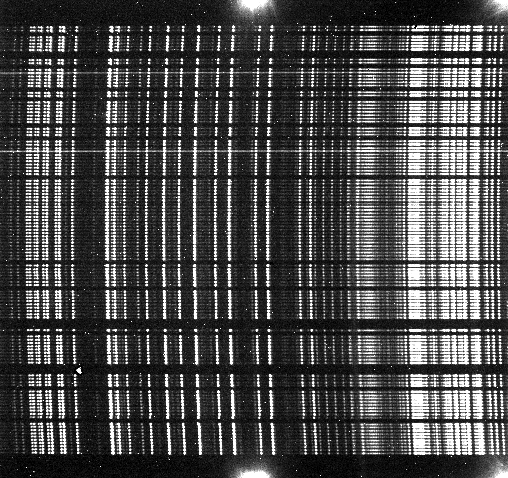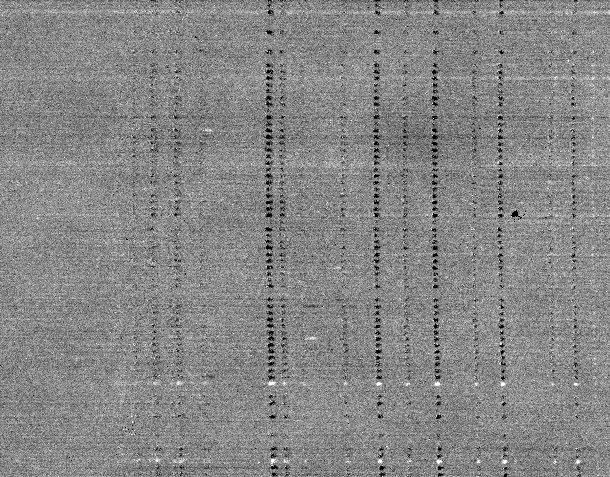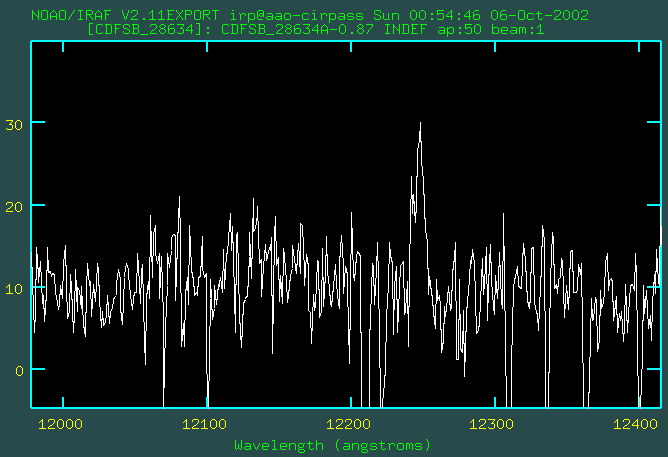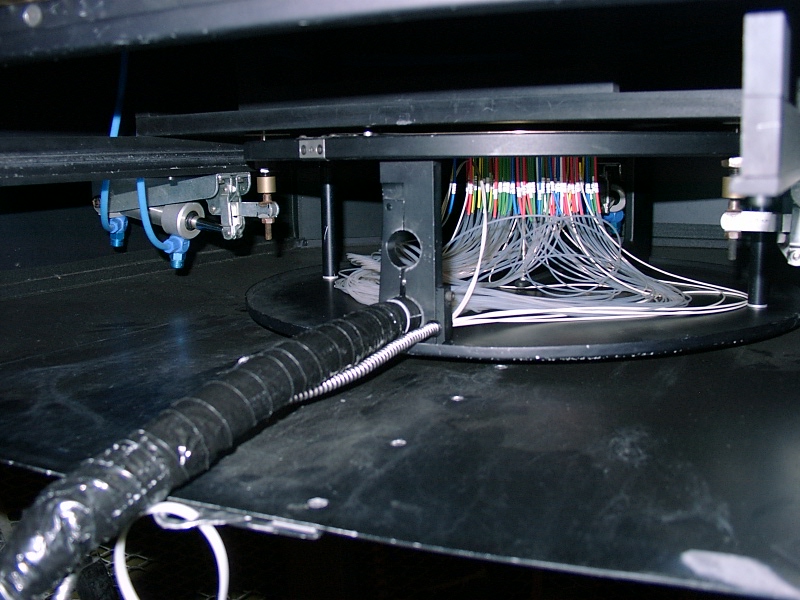
 |
In early Oct 2002 we successfully commissioned the MOS mode of the CIRPASS near-infrared spectrograph, built by the Instrumentation Group of the Institute of Astronomy on the 3.9m Anglo-Australian Telescope. |
|---|
| This is a 45 min exposure showing spectra for about 130 fibres. The central wavelength is 12700 Angstroms and the wavelength coverage is about 900 Angstroms. The spectral resolution is R=4233 which allows us to get cleanly between the intense atmospheric OH lines. The dispersion direction is left to right. The spectra of two faint stars can be seen. These were included to check our astrometry. The galaxies are too faint to be seen in the continuum in this raw image. |  |
|---|
 |
We observed the Chandra
Deep Field South with the fibres arranged in AB pairs for each galaxy.
During the exposure we beamswitched the telescope between the A and B positions
in an ABBAABBA sequence. Each pointing was a 15 minute exposure. This image
shows the result of adding the 4 A exposures and subtracting off the sum
of the 4 B exposures.
Two galaxies clearly show emision lines which appear as a positive (galaxy in the A fibre) and negative (B fibre) pair demonstrating that in just one hour we can detect H-alpha from starformation in galaxies at z~0.9. Two continuum source objects can also be seen near the top. Also note the excellent sky subtraction in between the OH lines. Because the OH intensity varies, the OH lines do not completely subtract out. In this case the OH was stronger in the B exposures. The two fibres which show positive OH residuals were partially vignetted by the guide probe and saw more OH in the A exposures. |
|---|
| The spectrum of the rightmost pair of lines in the above image. This is due to H-alpha at z=0.86. |  |
|---|
| The fibres after being plugged in to the plug plate.
There are 150 spectroscopic fibres and 6 guide fibres. Each fibre is 1.65 arcsec in diameter and the plate covers the entire 40 arcmin Cassegrain FOV. The old AAT FOCAP system was resurrected for this observing run after spending 10 years in a cupboard. Thanks to the AAO staff this worked perfectly, providing the plugplates, the plate holder, the Cassegrain plate loading system, the guide fibres and the guide TV. IoA provided the CIRPASS NIR spectroscopic fibres.
|
|---|
| A close-up of the fibres showing how they are arranged in AB pairs for beamswitching (sky-subtraction) . |
|---|
| The completed plug-plate assembly ready to be loaded at the Cassegrain focus. |
|---|
| The plugplate assembly loaded at the Cassegrain focus. This picture shows a more centrally concentrated field than in the previous pictures. |  |
|---|